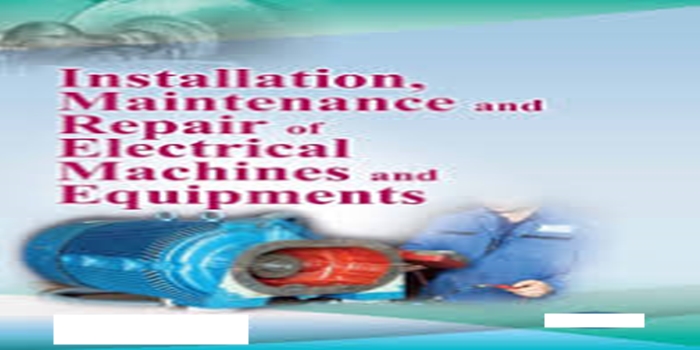In this article, we discussed the meaning, the aspect, the importance, we also talked about the How to take care of the equipment.
Definition
“Installation and maintenance of mechanical equipment” refers to the process of properly setting up technology and then consistently performing routine checks, cleaning, lubrication, and repairs to ensure its optimal functionality and longevity, often including preventative measures to catch potential issues before they become major problems.
Aspects of mechanical equipment installation:
Site evaluation:
Assessing the location where the equipment will be installed, including power supply, space requirements, and structural integrity.
Planning and design:
Creating a detailed plan for equipment placement, piping, wiring, and necessary support structures.
Equipment delivery and handling:
Carefully unloading and transporting the equipment to the installation site.
Assembly and alignment:
Properly assembling the machine components and ensuring they are aligned according to specifications.
Testing and commissioning:
Running the equipment through test cycles to verify functionality and identify any issues before full operation.
Preventative maintenance:
Regularly scheduled inspections, cleaning, lubrication, and minor adjustments to prevent major breakdowns.
Lubrication:
Applying appropriate lubricants to moving parts to reduce friction and wear.
Cleaning:
Removing dirt, dust, and debris from the equipment to maintain optimal performance.
Parts replacement:
Replacing worn or damaged components as needed, often based on manufacturer recommendations.
Corrective maintenance:
Repairing any issues that arise during operation, including identifying the root cause of the problem.
Monitoring and data analysis:
Utilizing sensors and monitoring systems to track equipment performance and identify potential problems early on.
The importance of proper installation and maintenance:
Increased lifespan:
Regular servicing and preventative measures extend the useful life of machinery by catching wear and tear before it leads to critical failures.
Reduced downtime:
Identifying and fixing minor issues early prevents major breakdowns that can disrupt production and lead to significant downtime costs.
Improved efficiency:
Well-maintained equipment operates at peak performance, leading to optimized workflow and higher productivity.
Cost savings:
Proactive maintenance is typically less expensive than emergency repairs, saving money on unexpected maintenance costs.
Enhanced safety:
Regular inspections and maintenance can identify potential safety hazards, preventing accidents and injuries related to faulty equipment.
Quality control:
Consistent machine performance ensures product quality remains high and consistent.
Compliance with regulations:
Depending on the industry, proper maintenance may be required to comply with safety and environmental regulations.
Increased efficiency and productivity:
Well-maintained equipment operates at peak performance, minimizing production disruptions.
Reduced downtime and repair costs:
Early detection and preventative maintenance can prevent major breakdowns.
Improved safety:
Proper installation and maintenance can mitigate risks associated with malfunctioning machinery.
Extended equipment lifespan:
Regular upkeep can significantly extend the useful life of mechanical equipment. Condition monitoring:
Utilizing technologies to monitor machine health and identify potential problems before they become critical.
Proper documentation:
Maintaining detailed records of maintenance activities, including dates, performed tasks, and parts replaced.
Trained maintenance personnel:
Having skilled technicians who understand the equipment and can perform maintenance tasks correctly.
How to take care of mechanical equipment includes:
Pre-installation checks:
Thoroughly inspect all components before installation to ensure they are in good working order and meet specifications.
Proper installation:
Follow manufacturer’s instructions for alignment, leveling, and securing the equipment to prevent damage during operation.
Regular inspections:
Conduct routine visual checks for signs of wear and tear, leaks, loose connections, unusual noises, and potential safety hazards.
Cleaning:
Regularly clean the equipment to remove dirt, debris, and contaminants that can affect performance and longevity.
Lubrication:
Apply appropriate lubricants to moving parts as per the manufacturer’s recommendations to reduce friction and wear.
Part replacement:
Replace worn or damaged components proactively, using genuine OEM parts to maintain optimal performance and avoid unexpected breakdowns.
Calibration:
Calibrate equipment as needed to ensure accuracy and consistency in operation.
Preventative maintenance schedule:
Create a planned maintenance schedule based on usage and manufacturer guidelines, including tasks like filter changes, belt adjustments, and fluid level checks.
Addressing issues promptly:
If any problems are detected during inspections, address them immediately to prevent further damage and potential safety risks.
Operator training:
Ensure operators are properly trained on safe operation procedures and basic maintenance tasks.
Important considerations:
Safety first:
Always follow safety protocols when working on mechanical equipment, including using appropriate personal protective equipment (PPE).
Manufacturer’s manual:
Consult the equipment manufacturer’s manual for specific maintenance instructions and recommended service intervals.
Record keeping:
Maintain detailed records of maintenance activities, including dates, performed tasks, and any identified issues.
Professional maintenance:
For complex repairs or servicing, consider seeking assistance from qualified technicians.
Conclusion
Installing mechanical equipment involves carefully following manufacturer guidelines to properly position, align, and secure the machinery, while maintenance focuses on regular inspections, cleaning, lubrication, part replacements, and timely repairs to ensure optimal performance, prevent breakdowns, and extend the equipment’s lifespan; this includes routine checks for wear and tear, addressing any potential issues proactively, and adhering to established maintenance schedules.
READ:


